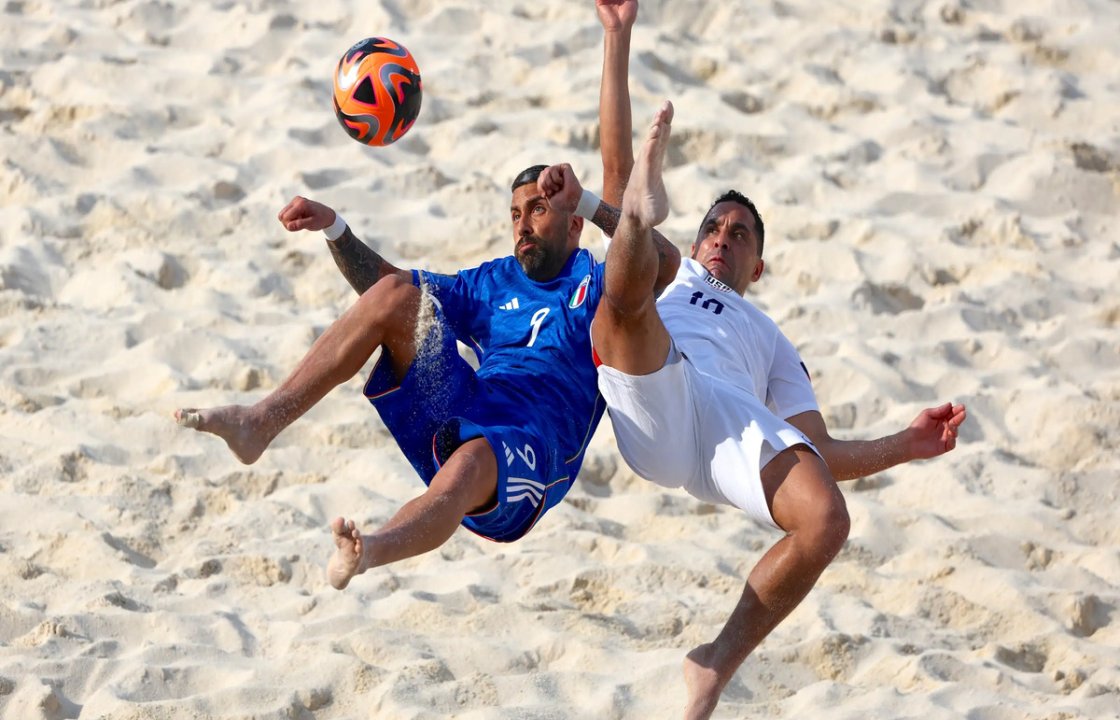Beach soccer is more than just a summer pastime—it's a fast-paced, dynamic sport that has the potential to thrive in the United States with the right investment, exposure, and grassroots development.
A Hidden Gem on American Shores
In a country where soccer continues its steady rise in popularity, beach soccer remains surprisingly under the radar. Played on sand with fewer players and an emphasis on skill, flair, and improvisation, beach soccer offers a unique spectacle that’s both engaging to watch and thrilling to play. Its entertaining format, combined with the U.S.’s long coastlines and beach culture, makes it a natural fit for growth. So why hasn’t it exploded yet?
To boost beach soccer in the U.S., we must first understand its current position in the sporting landscape and then take strategic steps to elevate it—from building infrastructure and nurturing talent to generating media exposure and community involvement.
The Allure of Beach Soccer
Beach soccer is a fast, high-scoring game that relies heavily on technical ability and quick decision-making. With matches consisting of three 12-minute periods and frequent substitutions, the pace is relentless, encouraging creativity and showmanship. Players often resort to acrobatic volleys, bicycle kicks, and flicks, making every game feel like a highlight reel.

Beyond its entertainment value, beach soccer serves as a perfect tool for player development. The unpredictable nature of the sand surface improves balance, agility, and ball control—skills that transfer well to traditional soccer. It promotes a playful style, one that encourages risk-taking and improvisation, two traits often underdeveloped in structured, high-pressure environments.
What’s Holding the U.S. Back?
Despite the sport's inherent appeal, several barriers stand in the way of its widespread adoption in the United States. First, there’s a lack of awareness. Many players, coaches, and fans simply aren’t familiar with the rules, competitive scene, or benefits of beach soccer. It is still seen more as a recreational activity than a competitive sport.
Second, there’s a shortage of official tournaments, clubs, and facilities. While the U.S. has plenty of beaches, few are equipped or designated for organized beach soccer training or events. Additionally, beach soccer doesn’t yet have a clear pathway for youth to progress into competitive levels or national representation.
Finally, media coverage and sponsorships are minimal. Without visibility, there’s little incentive for young athletes to pursue the sport seriously or for clubs to invest in its growth.
Laying the Foundation: Youth Development and Coaching
For beach soccer to thrive, it needs to be introduced at the grassroots level. That starts with youth academies and clubs integrating beach soccer training into their programs. Instead of viewing it as a novelty, coaches should recognize it as a developmental asset that complements traditional training. The sand surface forces players to refine their touch, footwork, and positioning, often leading to accelerated skill growth.
Creating coaching certifications specific to beach soccer would also help ensure that the game is taught effectively. The tactics, fitness requirements, and technical aspects differ from traditional soccer and should be respected as such. By educating coaches, we ensure that the next generation of players are not only capable but passionate about the sport.
National Leagues and International Ambitions
Building a domestic league is crucial. Much like Major League Soccer (MLS) provided a home for traditional soccer to flourish, a Beach Soccer League—with regional divisions and a competitive structure—would offer consistent opportunities for players to showcase their talent.
Moreover, the U.S. must set its sights on the international stage. The FIFA Beach Soccer World Cup has grown in prestige, and while the U.S. has participated, it has not yet become a dominant force. To change that, the national team program should scout athletes from traditional soccer, especially those with technical flair, and create dedicated camps and tournaments to foster a deep talent pool.
A strong showing on the international stage would drive media coverage, public interest, and youth participation, creating a virtuous cycle of growth.

Engaging the Community and the Culture
Beach soccer thrives on vibrant atmospheres, often accompanied by music, fan interaction, and beachside entertainment. By integrating the sport into community festivals, summer camps, and local tournaments, it can quickly embed itself into the American beach culture.
Promoters and event organizers should focus on making beach soccer a cultural experience, not just a game. From food trucks and DJs to youth clinics and celebrity matches, the possibilities are endless. These events should be used to introduce the sport to new audiences, creating memories and connections that last.
Moreover, social media platforms like TikTok and Instagram offer powerful tools to showcase the sport’s visual appeal. By promoting jaw-dropping goals, trick plays, and behind-the-scenes content, beach soccer can capture the digital generation and expand its fanbase.
The Role of Sponsorships and Branding
Like any sport, financial investment is key. Brands that align with fitness, outdoor living, and lifestyle—think surfwear companies, energy drinks, and health foods—are natural partners. Beach soccer provides them with a visually appealing, high-engagement platform that can reach diverse demographics.
Sponsorships can fund everything from equipment and tournaments to scholarships and player development programs. With the right branding strategy, beach soccer can become synonymous with summer, fitness, and fun, making it attractive to both youth and adult markets.
A Future Full of Potential
The United States has all the ingredients needed for beach soccer to flourish: a growing interest in soccer, extensive coastlines, a sports-hungry population, and a culture that celebrates outdoor recreation. What’s missing is organization, exposure, and strategic investment.
By building youth pathways, promoting national leagues, and tapping into the country’s vibrant media and marketing ecosystem, beach soccer can become a pillar of American sports culture, not just a summer diversion.
Connecting the Sand to the Field: SIA Academy’s Vision
At SIA Academy, we understand the importance of diversified training environments to build more complete athletes. Our programs integrate technical skill development, creativity, and agility, all of which are reinforced through beach soccer. Whether it’s using sand-based drills for conditioning or organizing beach games for team bonding and improvisational play, we see beach soccer as a vital supplement to high-performance training. By encouraging young athletes to embrace different forms of the game, including beach soccer, we prepare them not only to succeed in traditional soccer but to excel across multiple formats and environments—just like the future of American soccer demands.






